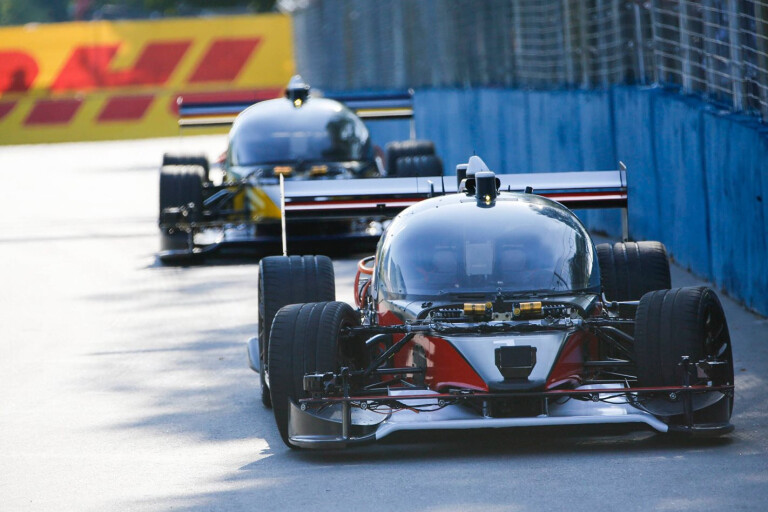
The world’s first driverless race series, Roborace, made its public debut over the weekend, and things didn’t exactly go to plan.
Two of the series’ development cars, dubbed Devbots, conducted a series of tests and demonstrations at the circuit used for last weekend’s Buenos Aires Formula E ePrix. Roborace will be a support category for the all-electric world championship once it gets up and running.
The closed-canopy race cars can currently be driven by both humans and computers, with the pair conducting what Roborace claims is the first “race” between two driverless cars.
While one completed the test successfully and reached speeds of 186km/h, the second ended up crashing into the harsh concrete barriers of the street circuit.
Roborace tweeted that the car crashed “while pushing the boundaries of AI”.
“No drivers were harmed though,” they added, tongue in cheek.
Development of the Roborace series has been ongoing, with the team conducting tests both on street circuits and closed circuits such as Silverstone in the UK.
Devbot 1 wins! Clocking a new new fastest lap at top speed of 186kph #BAePrix pic.twitter.com/qBvT8iqLWZ
— Roborace (@roborace) February 18, 2017
The end goal is a series where teams compete against each other using identical driverless cars, with software tweaks being the point of difference for the competition.
While this isn’t the first time a Devbot has taken to a track without human input, it is the first time both cars have conducted tests at the same time.
While many will slam Roborace and the driverless race series (which already has racing purists’ blood boiling) it is important to remember this is the incredibly early stages of development.
And we are off. #BAePrix pic.twitter.com/1DQ9jfl6Wz
— Roborace (@roborace) February 18, 2017
Also, cars crashing are fine by us; it means the technology is being pushed to the extreme, much like when racing drivers find themselves beyond the limit. Only this time there isn’t a human inside the car.

COMMENTS